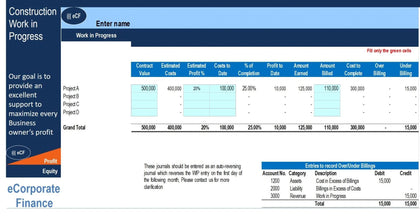Customer Spending and Retention Pattern Modeling
First, let's talk about customer spend. If you know that there are large spending changes in your customers from the time they become a customer to the time they stop being one (or into perpetuity) then your financial model / forecast should account for that. Normally the traditional style is to define the average spend per month or average price of the contract they pay for each month, but that might not be sufficient depending on the kind of product or service that is being sold and/or the type of customer spending patterns that exist.
This model makes it easy to model this. You can manually enter the average amount spent for a given customer from month 1 to 60. The logic in this model will then take that and based on the customers added per month, it will calculate the total spend of each monthly cohort in the spending pattern defined across the same timeline in aggregate. The pattern might be defined as a curve or you can roughly estimate the output of spend per month from the initial acquisition and on-going life of your customers that you know to be true.
The second part of this model is customer retention. This aspect usually follows a general average linear curve. In a SaaS model, it would be assumed you lose x% customers per month or at renewal and x% never changes. Now, with this logic you can model dynamic retention rates over a 60-month period. What that means is you are able to define if customer churn happens faster in the first few months, slows down for awhile, speeds up, or whatever configuration makes sense based on your customer research.
The rate of customer loss may change over the life of a cohort. You can capture that dynamic nature with this template.
The final results will show cumulative customers (gained / lost / cumulative) and monthly revenue over a 60 month period. Visualizations make it easy to see the curve you have defined for retention and spend.
Customer Spending and Retention Pattern Modeling
Available:
In Stock
$45.00
First, let's talk about customer spend. If you know that there are large spending changes in your customers from the time they become a customer to the time they stop being one (or into perpetuity) then your financial model / forecast should account for that. Normally the traditional style is to define the average spend per month or average price of the contract they pay for each month, but that might not be sufficient depending on the kind of product or service that is being sold and/or the type of customer spending patterns that exist.
This model makes it easy to model this. You can manually enter the average amount spent for a given customer from month 1 to 60. The logic in this model will then take that and based on the customers added per month, it will calculate the total spend of each monthly cohort in the spending pattern defined across the same timeline in aggregate. The pattern might be defined as a curve or you can roughly estimate the output of spend per month from the initial acquisition and on-going life of your customers that you know to be true.
The second part of this model is customer retention. This aspect usually follows a general average linear curve. In a SaaS model, it would be assumed you lose x% customers per month or at renewal and x% never changes. Now, with this logic you can model dynamic retention rates over a 60-month period. What that means is you are able to define if customer churn happens faster in the first few months, slows down for awhile, speeds up, or whatever configuration makes sense based on your customer research.
The rate of customer loss may change over the life of a cohort. You can capture that dynamic nature with this template.
The final results will show cumulative customers (gained / lost / cumulative) and monthly revenue over a 60 month period. Visualizations make it easy to see the curve you have defined for retention and spend.



























